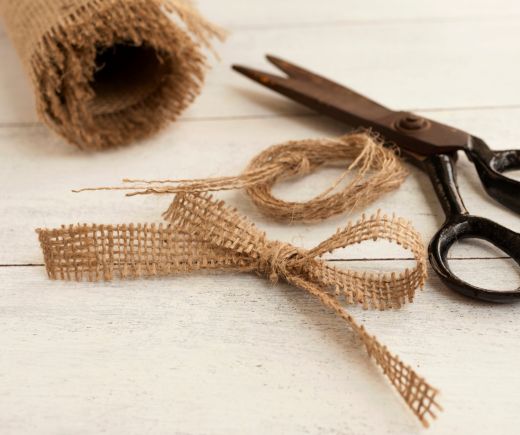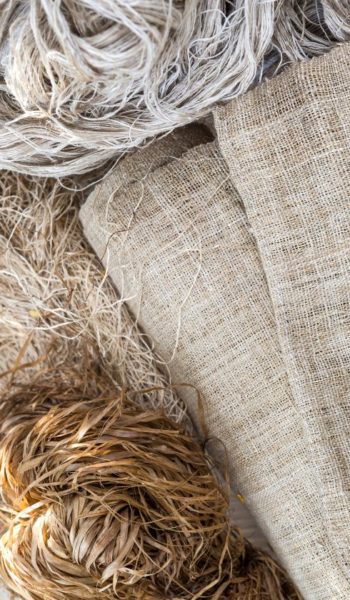Satin vs Sateen
In the vast panorama of textiles available to retailers, designers, and creators, two materials often stand out for their unique […]
Secure Payments
Over 450 fabrics with large stock availability!
Whether you are a fashion enthusiast, a DIY lover, or simply curious about sustainable materials, this guide covers everything you need to know. From the origins and production process of hessian, burlap, and jute, to their various uses in fashion, home decor, and crafts, this blog provides valuable insights and tips.
Hessian is a plain weave fabric with a coarse texture, made from jute and vegetable fibres.
Burlap originated in India. Owing to the numerous jute plants growing there, burlap was widely produced and was used only for making ropes in earlier times. In the 1790’s English traders then began to ship tons of jute to Britain.
Hessian takes its name from German soldiers who belonged to a state named Hesse, who wore uniforms made from burlap and were known as Hessians. Since then, hessian fabric has been called by this name.
Burlap is the same natural fabric as hessian, but the term is more commonly used across America and Canada. In the UK and Europe, it is better known as Hessian.
Jute is extracted from the bark of the white jute plant. It is a natural fibre with a golden hue, hence being called the Golden Fibre. Jute is an annual crop taking about 120 days to grow.
Hessian is often used to make sacks and to ship goods like coffee beans and tea. It is breathable and so resists condensation and associated spoilage of its contents. It is also durable enough to withstand rough handling in transit.
Hessian is commonly used to make sandbags. It is also perfect for a wide range of uses from home décor to craft projects and is very popular for wedding decorations at the moment.


One major advantage of hessian fabric is that it is made entirely from natural vegetable fibres, making it completely biodegradable. It is extremely useful in landscaping, agricultural uses and also very popular in the décor/craft industry for its eco-friendly properties.
Hessian is a sustainable fabric due to the easily grown plants, that need very little tending. You do not need to apply much effort for a large yield. The plants do not require much water and can possibly survive a drought.
In most cases, hessian requires specialist cleaning. However, hand wash may be used for small finished hessian pieces. Wash with cold water (warm water could shrink the textile). Use a gentle liquid detergent and soak for 5 minutes (no more).
Hessian must be thoroughly dried. Open weave Hessians need a more specialist clean to keep their shape.
Hessian can be dyed using cloth dye. It is best to do the dye mixing in an old bucket outside. Leave the fabric in the solution as per the dye instructions, but make sure to keep stirring to get an even colour. If you want a lighter colour, leave it in for less time.
It should be covered with a damp cloth and ironed on medium heat.
Hessian is a versatile fabric just like cotton and linen and will take paint well.
Although hessian is not highly recommended for punch needlework, it could be used for heavier projects such as rugs and runners.
This is a 12oz hessian with a closer, more even weave. Generally used for home décor projects, table runners and making notice boards.
This is a 14oz jute, used for heavier-weight projects such as floor runners and rugs.
This is a lighter 8.9oz hessian, with a more open weave. Used for bags, home décor, wedding decorations and craft projects.
A very open weave jute, widely used in plastering, moulding and sculpture.
This is a 15oz jute, used for making bags and sacks. It also can be used for craft projects that require a heavier fabric than Jute Hessian.
This is an 8.9oz hessian that has a flame-retardant treatment. This is perfect for commercial projects, such as use on stage and for making public notice boards.
This is a 15oz stiffened jute, used for commercial pelmets and tie-backs.